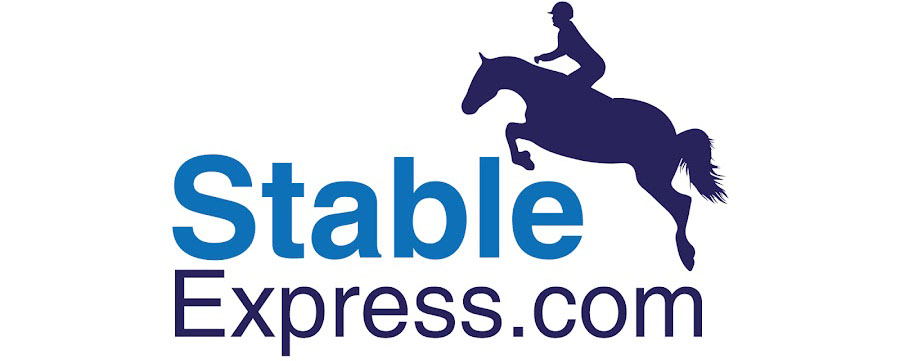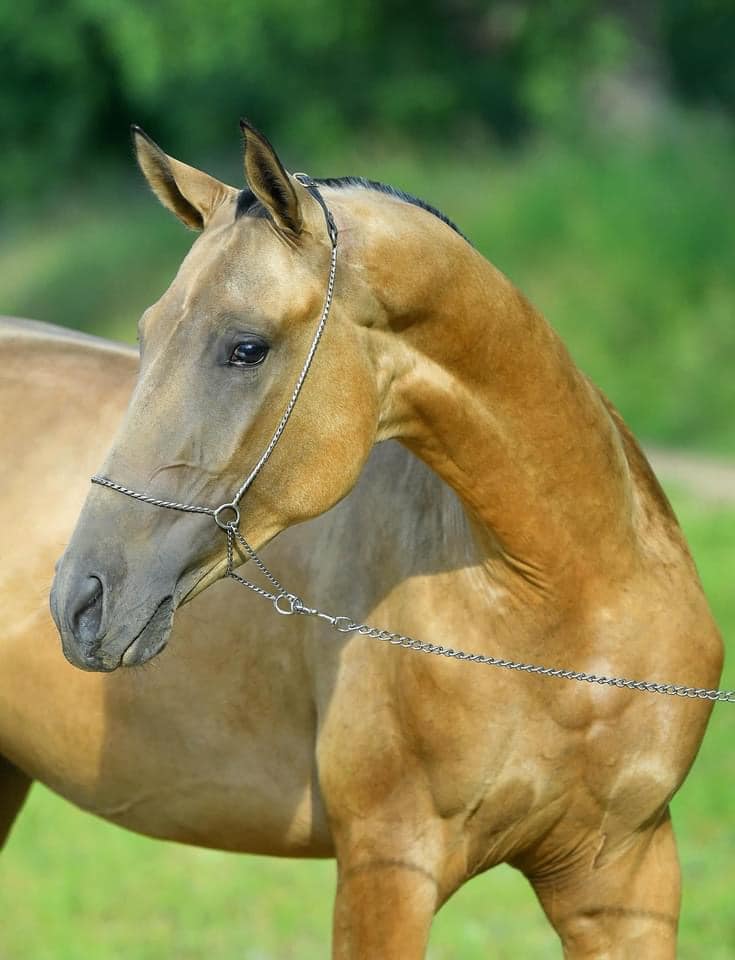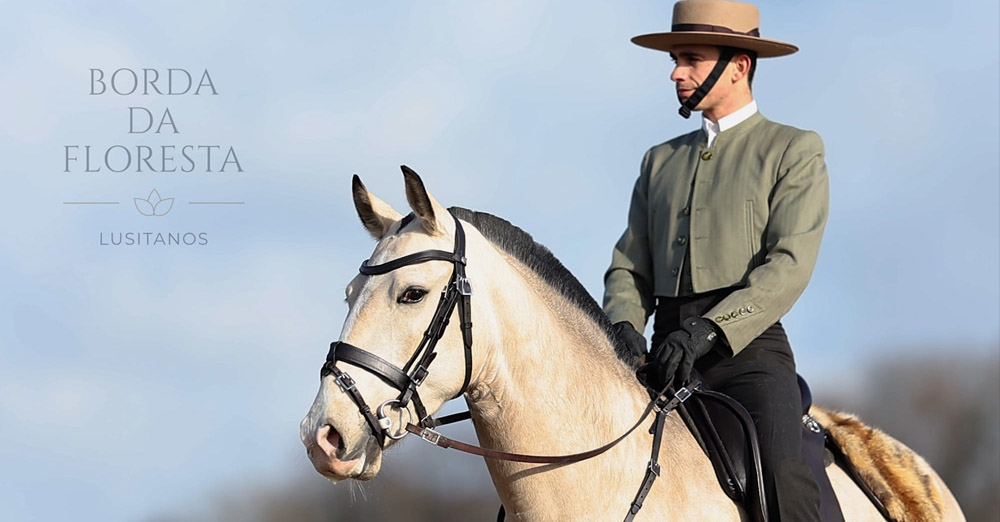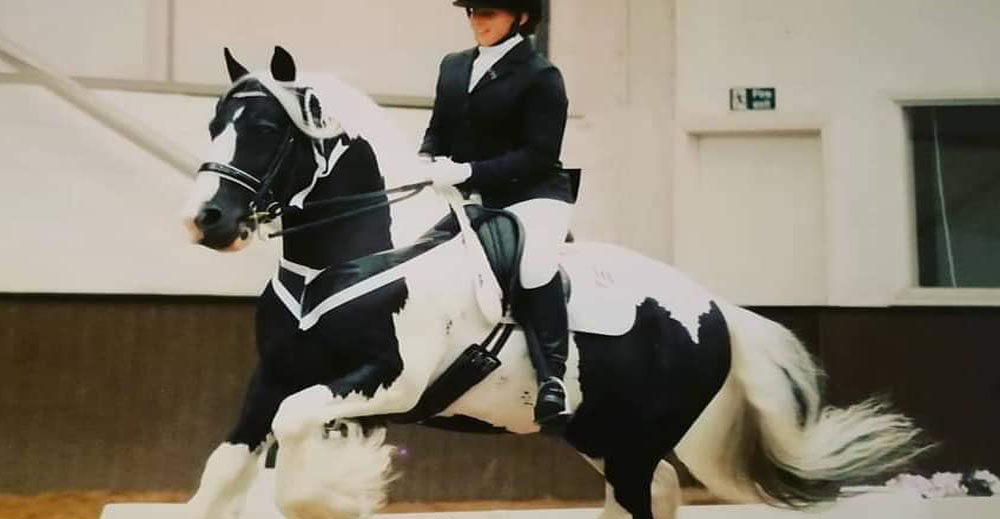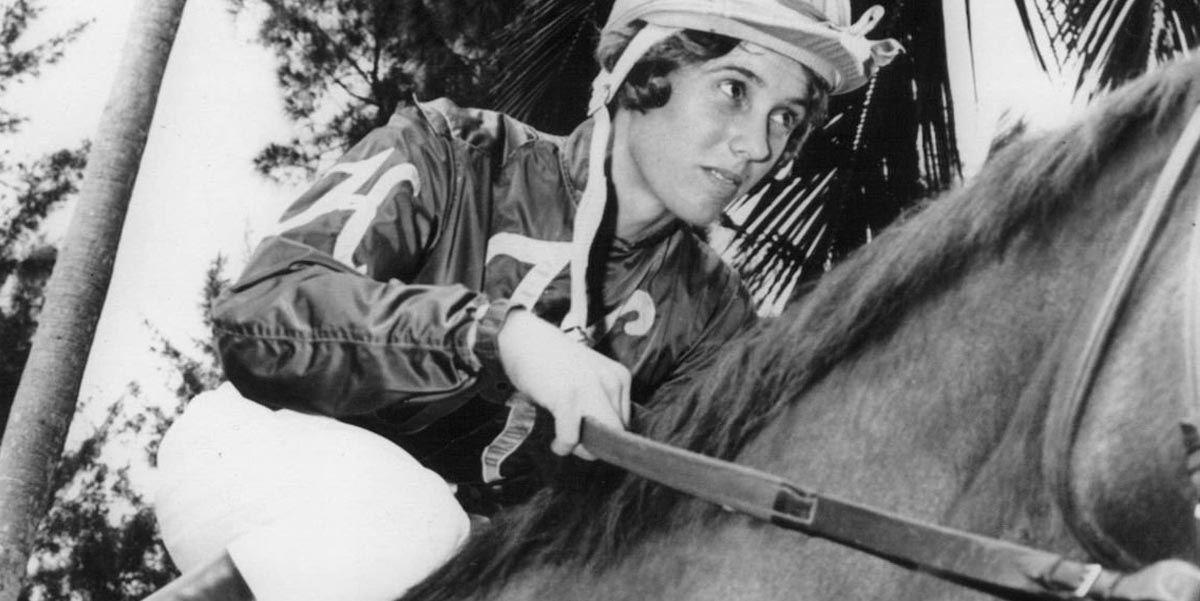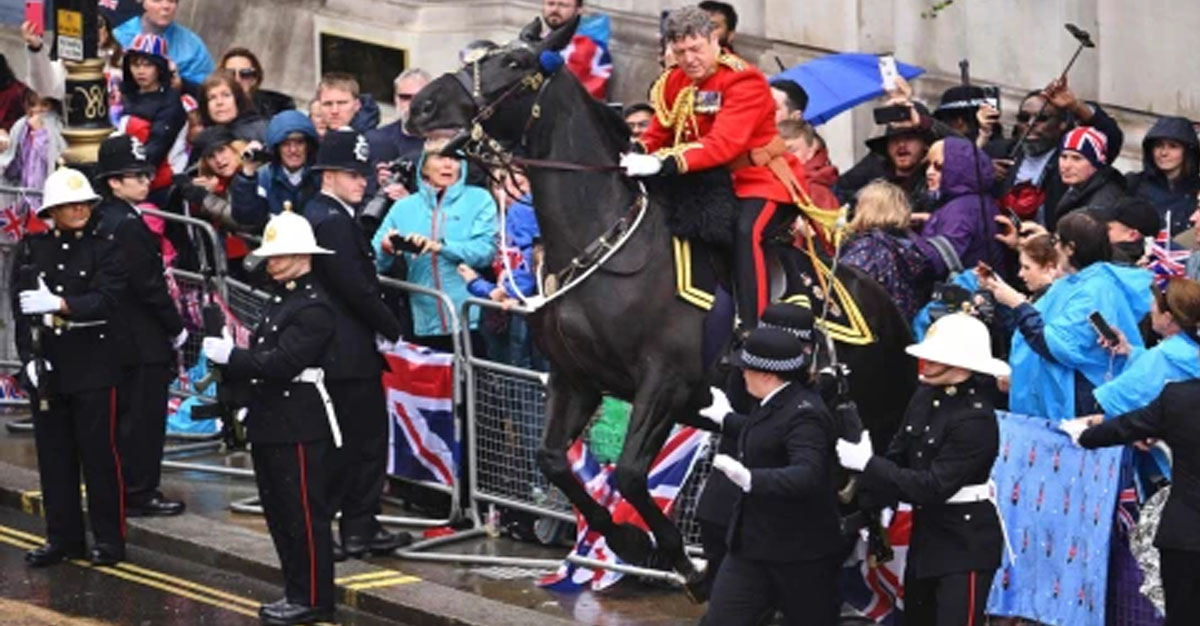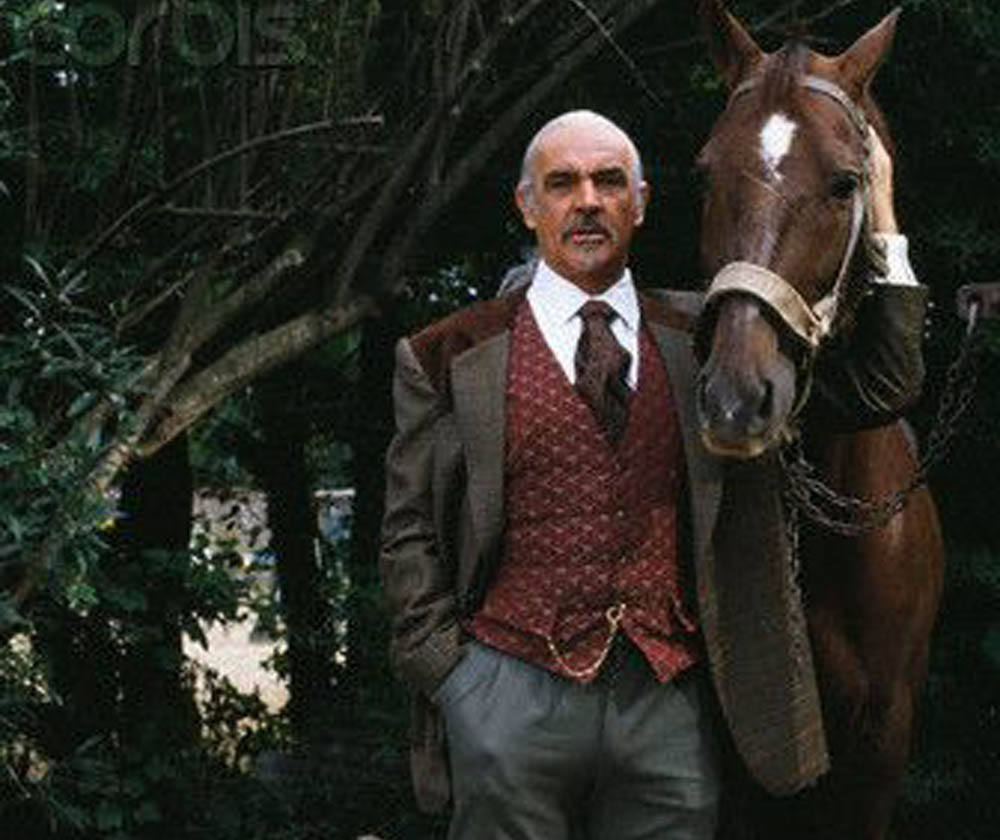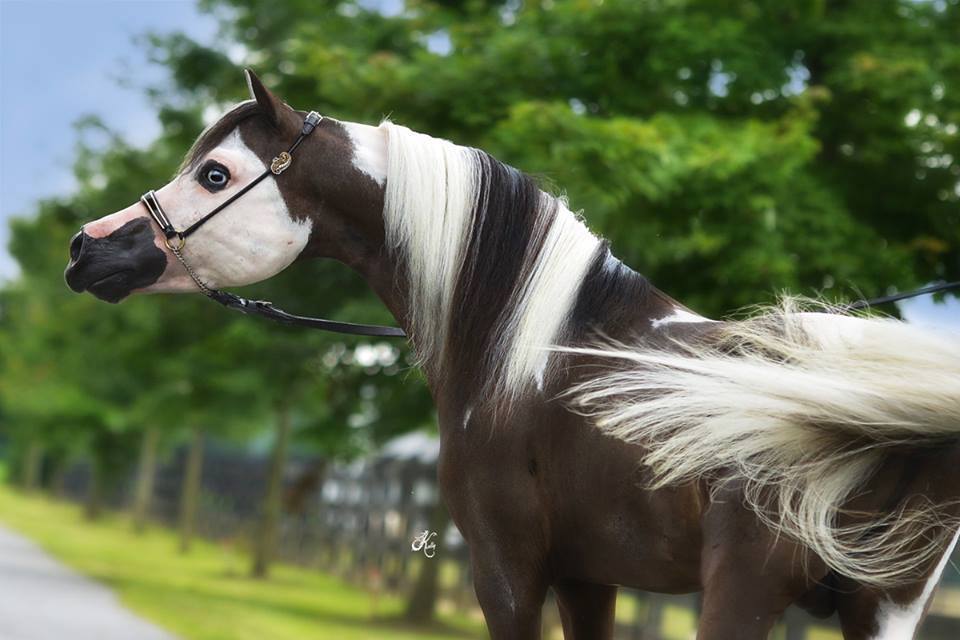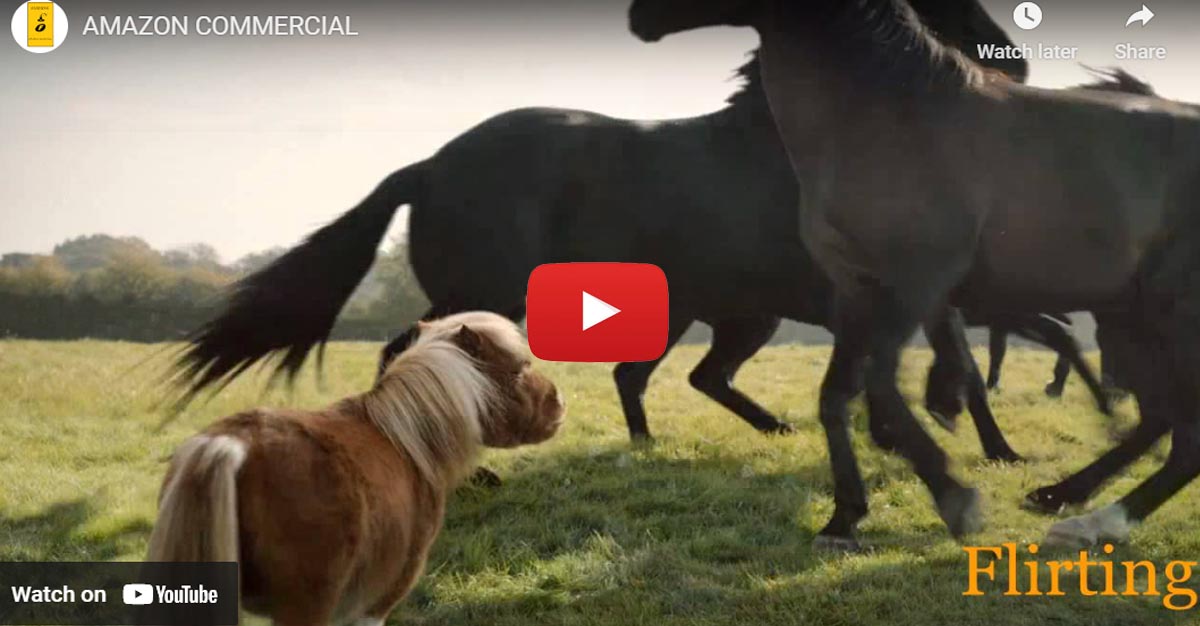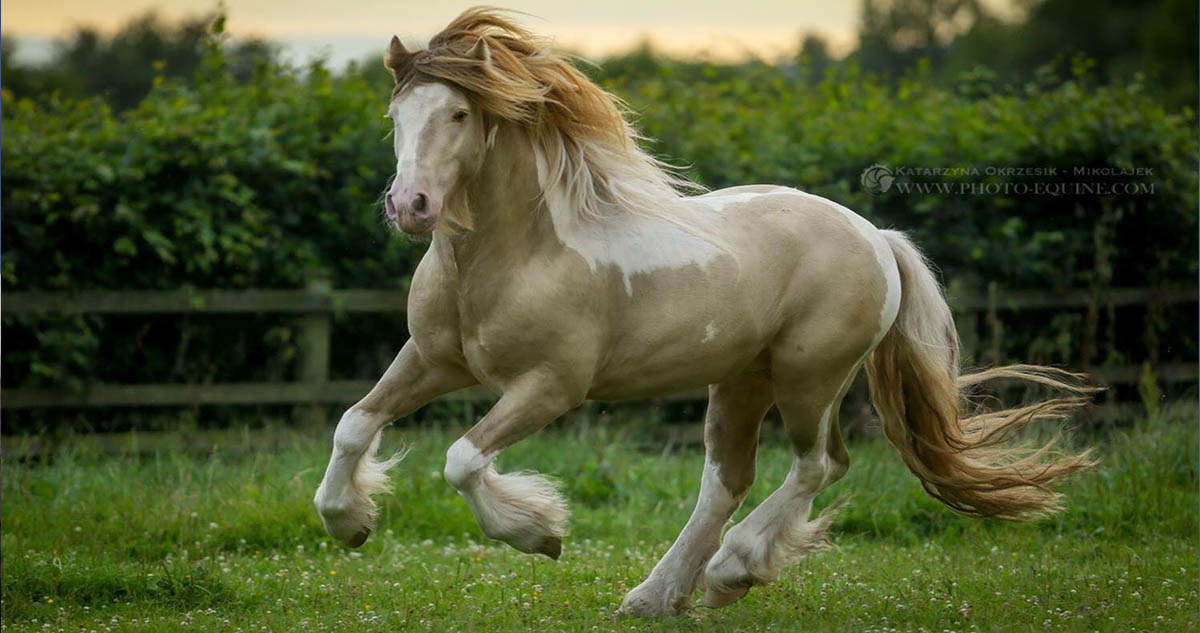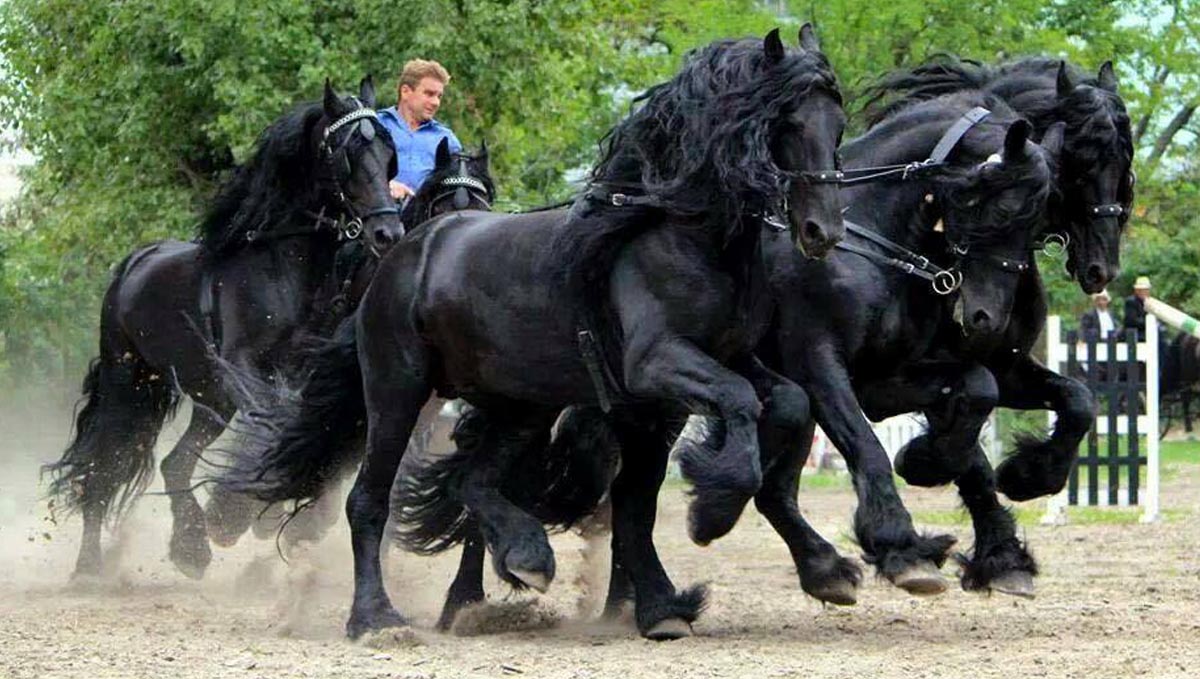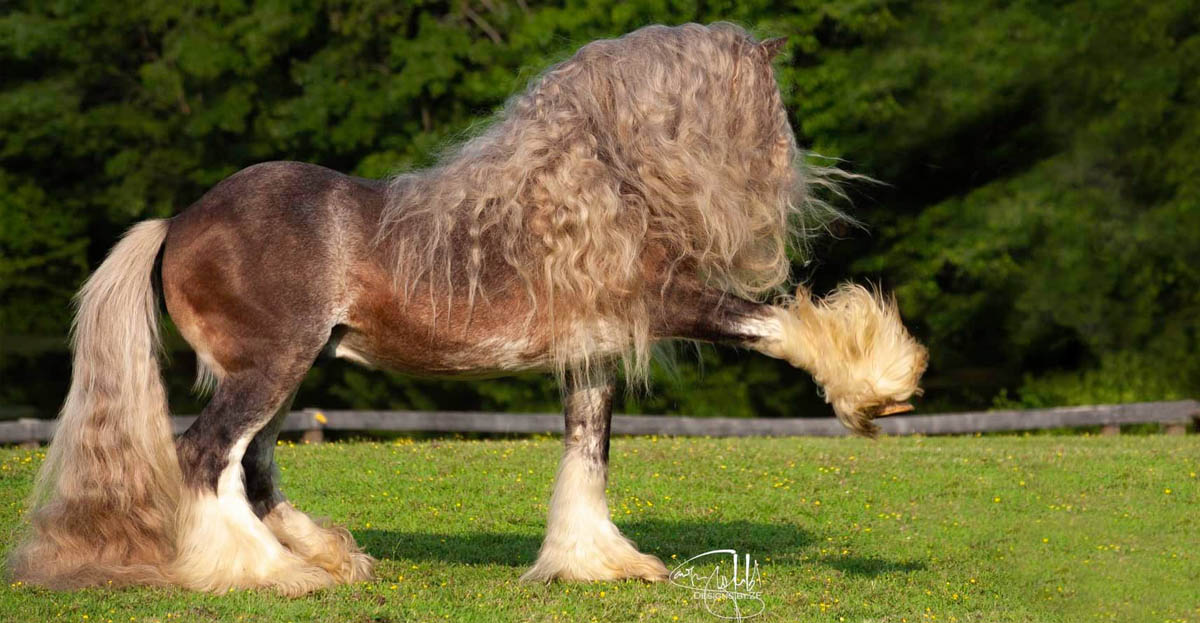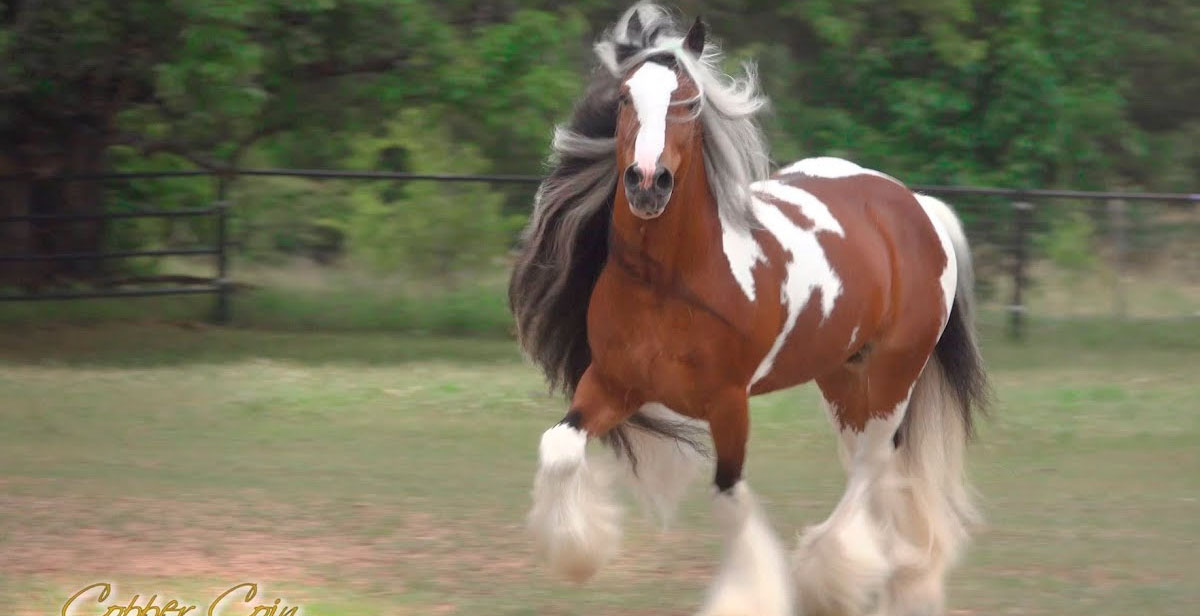Akhal-Teke Stallion - Akgez Geli - The Golden Horse
Akgez Geli is a 2008 Akhal Teke stallion, born in 2008 sired by Gaigysyz out of the mare Enegul who is a daughter of Dschagitai. Akgez Geli has been a very important stallion for the Akhal Teke horse breed and produced numerous high quality offspring.
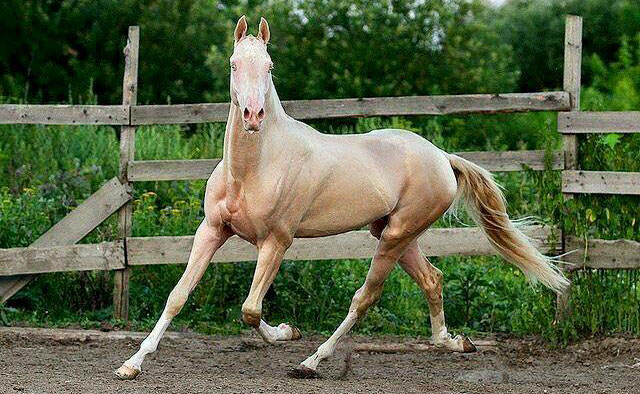
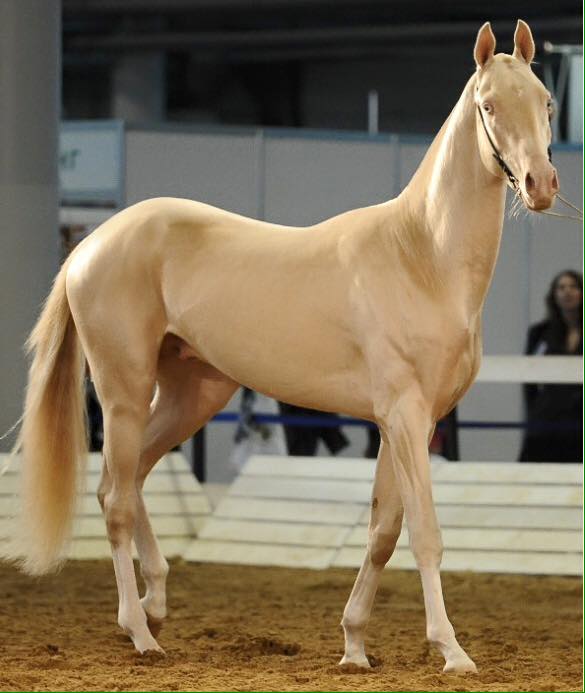

The Akhal-Teke Association of America was incorporated in 1983 to promote the breed and oversee two registries: The Akhal-Teke Registry of America and the Akhal-Teke Sporthorse Registry of America for crosses of one half or better Akhal-Teke blood. The Sporthorse registry is not for the creation of a new breed, but to record the birth, lineage, and achievements of sporthorses whose breeders have utilized the Akhal-Teke genepool in their creations.
The ATAA was directly responsible for the first-ever visit to the US of Dr. Tatyana Riabova, Registrar of the International Association of Akhal-Teke Horse Breeding in Russia, in 1997, to inspect, register, and grade the American Akhal-Teke population and meet the breeders and owners of these horses. This trip was the culmination of a great deal of correspondence and hard work to acquire governmental permission and visas, and set the stage for the ongoing exchange of information between the International Association and the ATAA. We continue to maintain direct communication with the Mother Stud Book and other countries` breed associations, as we feel the breed is an International treasure, and not limited to any one country.
GOALS OF THE ATAA
1. To increase awareness and recognition of the Akhal-Teke breed in the American horse public.
2. To foster and promote communication and cooperation between owners, breeders, supporters and fanciers of the breed.
3. To educate the sport-horse public to the athletic capabilities of the breed through marketing and competition.
4. To reward the dedication of individuals within the breed who strive to preserve this rare and unique genepool.
5. To work closely with other national and international breed organizations to conserve and protect the breed standards and history.
American History of the Akhal-Teke
The introduction of the Akhal-Teke to America started in September 1978 when Margot and I traveled to Moscow, USSR to attend a Prodintorg Sport Horse Auction. Prodintorg, the government agency which controlled the trade in agricultural products in the USSR, held five hard currency sport horse auctions each year. Akhal-Teke were usually only available at the Spring and Fall auctions. There were no private sales of horses at that time in the USSR. The cold war was in full force, communications consisted of post, telephone and telex; all of which were unreliable, not taking into account the language problem.
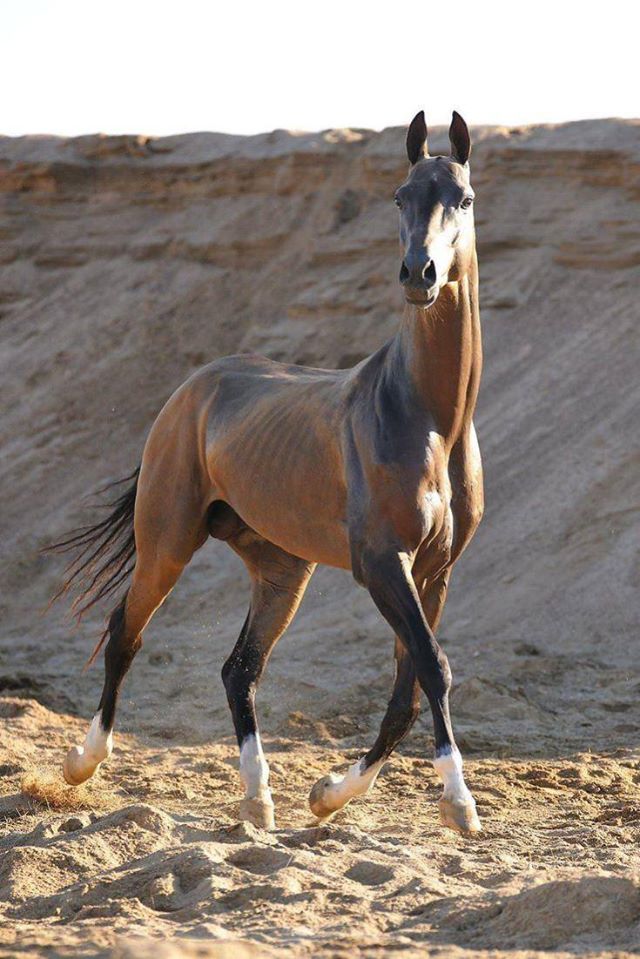
At the auction we attended, sixteen Akhal-Teke were presented, ten stallions and six mares. Of the sixteen, ten were sold, seven stallions Senetir in Moscow 1978and three mares. With the assistance of Mr. den Hartog of the Netherlands we purchased three Akhal-Teke; SENETIR a 1975 gold-bay colt, DEDEY a 1975 bay filly, and OLIVA a 1974 bay filly. The horses were transported to Mr. Den Hartog`s farm near Amsterdam while we returned to America carrying blood samples from each horse. The USDA had stopped performing courtesy pretests on blood samples from horses awaiting importation, and the threat of piroplasmosis made it mandatory to know a horse was negative before incurring the cost of flying it to the USA, so we had made arrangements for blood testing before leaving for the auction.
By the time the horses arrived in Amsterdam we had learned they all tested positive for both Babesia Caballi and Babesia Equi. It was depressing news, but it spurred us on in our search for a way to clear them of the antibodies so they could be imported. We hadn`t come this far to just give up. In 1979 the good news was that SENETIR tested negative so that summer he arrived at our farm in Illinois, becoming the first Akhal-Teke in America. The bad news was, DEDEY died in a stable accident in the Netherlands and OLIVA still tested positive. In November 1979, EQUUS magazine published an article, `Stranger in a Strange Land`, about the importation of, SENETIR, the first Akhal-Teke in America. After further treatment OLIVA joined Senetir at our farm in Illinois during the summer of 1980. We were now considerably over our estimated costs, had two Akhal-Teke instead of three, but `The Akhal-Teke Stud` had become a reality and we were on our way to introducing the Akhal-Teke to America.
1981 produced several significant events; we moved `The Akhal-Teke Stud` from Illinois to its present locatioSengar, son of Senetirn at Shenandoah Farm, Staunton, Virginia and SENOVA, out of OLIVA by SENETIR, a goldbay filly was the first Akhal-Teke foaled in America. We also imported two weanling fillies, DUNJA & KARJERA from Dr. W. Peters, Pferdhof Winkum in Germany.
The small Akhal-Teke logo, T within a horseshoe A is designed for use in EQUUS advertisement.
1982 – For a viable breeding operation we needed more Akhal-Teke mares and there were very few mares available, without the internet locating them was a laborious process. Then the connection developed with Mr. Den Hartog produced more results, he sent us photos of 2 mares and a stallion that were for sale. Piro pretests, which had been reinstated by the USDA, showed only one mare tested negative so we imported KUSHKA based on her picture. It is ironic, as we found out several years later, that most of the Akhal-Tekes sold during the 70`s and 80`s were considered saleable because of poor racing records but many were in fact good quality Akhal-Tekes.
Early in the year we were contacted by Hans Sprandel of Minneapolis, MN who in partnership with his brother Eberhard, was planning to import Akhal-Teke from Germany. Many of them had pretested positive for piroplasmosis and they asked if we had any experiences that we would share. In the belief that the importation of additional Akhal-Teke would be helpful in the promotion of the Akhal-Teke in America we provided information on contacts and technology to the Sprandels so they could clear many of their Akhal-Teke of piro antibodies and import them into the USA. Later in the year Hans called again, Eberhard had purchased two mares, MONETA and GALKA, in the USSR to be shipped to the USA. As their farm was not ready Hans asked if we would pick up the mares at the import station and board them until the farm was ready. He also asked if we were interested in buying GALKA, sight unseen we agreed. Unknown to the Sprandel`s or us both mares came with unwanted baggage that we did not discover until years later. Also, both mares were reportedly in foal leaving Russia. Upon arrival at our farm only GALKA was in foal (to Melekush 904).
Kerki, a Senetir daughter1983 – We incorporated The Akhal-Teke Association of America in Virginia as a closely held non-stock corporation. This approach was used because at that time we were the only ones with Akhal-Tekes in America and we wanted to stake a claim for the association name while opening it to the public as a way of gaining recognition for the Akhal-Teke. The long term goals for the association were; `The Preservation, Protection and Promotion of the Akhal-Teke while overseeing The Akhal-Teke Registry and the Akhal-Teke Sporthorse Registry`. The founding directors were Philip Case, Margaret Case and Hans Sprandel. Hans was included as a director because he was in the process of importing a number of Akhal-Teke to America.
Two Akhal-Teke foals are born at `The Akhal-Teke Stud`, Kashman and Melekush USA.
Hans and Eberhard Sprandel import thirty five Akhal-Teke to their farm near Wellington, Colorado and establish the second Akhal-Teke breeding/training center in America.

1984 – January issue of HORSEPLAY, a national magazine, publishes article `The Akhal-Teke Stud: Breeding the Russian Horse in America`.
At Eberhard`s urging the Sprandels embark on forming their own Akhal-Teke association, The World Akhal-Teke Association. With this conflict of interest, Hans Sprandel is removed from The Akhal-Teke Association of America Board of Directors and replaced by Daniel D. Stewart, III of Lexington, KY.
Dr. Willie Peters, Winkum, Germany decides to disband his Akhal-Teke breeding herd because of personal health problems. We are offered the opportunity to purchase the mares DARI & KYS, dams of the weanlings, DUNJA & KARJERA, which we purchased andKerki imported in 1981. Though aged, we decide to take the risk and import both of them. Our broodmare band is growing slowly. Little do we know of what lies ahead.
1985 – In March, Colorado Country Life, publishes article, `The Akhal-Tekke; A regal Russian horse breed finds a new home near Wellington`.
Eberhard Sprandel dies in a farm accident and the Sprandel breeding program in Wellington, CO falls into disarray.
1986 – By the end of this year there were about 70 Akhal-Teke in America, 23 at `The Akhal-Teke Stud` in Virginia and the remainder at the Sprandel ranch, Wellington, CO.
A color brochure, THE AKHAL-TEKE, is designed and 5000 copies are printed to help satisfy requests for information about the Akhal-Teke. Information packets including brochures and articles are developed for mailing.
1988 – Started exploring the possibility of having all Akhal-Teke blood typed as a requirement for registration. The first contact was with the Serology Lab, School of Veterinary Medicine, Univ. of California, Davis, CA. They were quite formal in their dealings and we were such a small association it was not a comfortable arrangement.
October, The Horse Digest publishes, `Akhal Tekkiners, Horses From Russia`.
1989 – October, Dressage & CT magazine publishes, `The Akhal-Teke; Antiquity Stock for an American Sport Horse`.
1990 – Established contact with Gus Cothran, Ph.D., Director, Equine Blood Typing Research Lab, College of Agriculture, University of Kentucky, Lexington, KY. He was conducting a research project examining genetic relationships among horse breeds and said blood typing the Akhal-Teke would be an extremely valuable contribution to the study. He had not expected to be able to include the Akhal-Teke in the Sengarstudy so soon. We developed a good working relationship with Dr. Cothran, and later, introduced him to Louis Firouz in Iran so he was able to include Iranian Akhal-Teke as well as the Caspian Horse in his study.
When Hans Sprandel decided to disperse his Akhal-Teke herd at auction, arrangements were made with Gus Cothran at The Univ. of KY to have all the Akhal-Teke blood typed prior to the auction so they could be registered in The Akhal-Teke Association of America, Akhal-Teke Registry.
In August, The Sprandel Golden Collection Sale was held in Fort Collins, Colorado, hosted by Hans Sprandel. Forty two horses were auctioned, consisting of 39 Akhal-Teke (22 mares/fillies, 13 stallions/colts, 4 geldings) plus a Budyonny gelding, a Don mare and an A-T x Don mare. This auction increased the number of Akhal-Teke owners in America by a significant amount in one night.
1991 – A Memorandum of Agreement between The Akhal-Teke Association of America and The Equine Blood Typing Lab at The Univ. of Kentucky was signed, agreeing that all blood typing required by the ATAA would be done at the U of KY.
During this time period, changes were taking place in the international political arena and in international communications that would have a major impact on the Akhal-Teke in America. The USSR was undergoing dramatic changes resulting in its breakup into individual independent states at the end 1991. The collapse of the centralized government resulted in a loss of direction and funding for the Akhal-Teke Breeding Farms and the Central Institute of Horse Breeding that controlled the Studbook and Registry. The lack of law and order saw many Akhal-Teke transferred from government ownership to private owners with less than proper documentation. Suddenly, quite a few Akhal-Teke could be purchased for hard currency from many sources. As all of this was taking place the Internet and World Wide Web were becoming increasingly available to the public allowing affordable, instantaneous, world wide sharing of information. It would take the Akhal-Teke community some time to adjust to the new world order.
1992 – Even from the chaos there were encouraging signs from The Institute of Horse Breeding, of a desire for contacts with Akhal-Teke breeders in America and a freer flow of information. Communications were still sporadic, language was a problem, but it was a start. This new freedom in Russia also uncovered problems that had existed under the old system. It was at this time that questions were being raised concerning the pedigrees of some of the Akhal-Teke mares that had been sold by Prodintorg during the 1970`s and 1980`s and were imported into the United States. Contact with The Russian Institute of Horse Breeding almost impossible.
Color brochure `The Akhal-Teke` is revised and another 5000 are printed as the original 5000 have been used up.Sengar
1993/1994 – Contact was established with Tatiana Riabova at the Institute of Horse Breeding with the assistance of Dimitri Urnov. In response to our questions Tatiana confirmed that the Russian authorities had declared that GALKA, MONETA, and KYS had been sold and exported with falsified pedigrees, therefore, they or none of their progeny were considered pureblooded Akhal-Teke. Of the 47 Akhal-Teke `The Akhal-Teke Stud` had imported, purchased or bred, 23 were considered non-purebred. Of the 39 Akhal-Teke sold at `The Sprandel Golden Collection Sale` four were considered non-purebred. Suddenly 30% of the Akhal-Teke in America were considered non-purebred. The revelation of falsified pedigrees caused a loss of time, money and credibility for American breeders that is difficult to measure and left a residue of suspicion that will take some time to overcome.
The situation was depressing but it was time to make the best of a lousy situation. The non-purebreds were sold at reduced prices with the pedigree situation explained to each purchaser. Many people are now aware of and dedicated to the Akhal-Teke breed because of their purchase of one of these almost pure non-purebreds.
There was a bright spot during the year, in July, HORSE ILLUSTRATED featured the Akhal-Teke as `Breed of the Month` which included a centerfold picture and SENETIR`s picture on the cover..
1995 – Cathy Leddy volunteered to help with the association, a newsletter was discussed, she started publication and `The Akhal-Teke Quarterly` was foaled.
1996 – In its Jan/Feb issue, SPUR magazine, publishes a comprehensive article about the Akhal-Teke; `Denizens of the Desert`.
First North American Akhal-Teke Conference, organized by Cathy Leddy in Snohomish, WA. Thirty people attended and took part in discussions on bloodlines, breeding and genetics.
1997 – Second North American Akhal-Teke Conference organized by Phil & Margot Case in Staunton, VA.
Tatiana Riabova, Ph.D., Akhal-Teke Registrar, Russian Institute of Horse Breeding is an honored guest and speaker during her first visit to America. During her visit she performed the first grading of Akhal-Teke in America and was very pleased with the high quality she saw. Unfortunately, she also brought some bad news. In addition to GALKA, MONETA and KYS she informed us that JUL had been reclassified as non-purebred, so she and her progeny were not eligible for registration in The Master Stud Book. This meant a further five Akhal-Teke from The Sprandel Golden Collection Sale had falsified Russian pedigrees and two more breeding programs in America were heavily impacted. At the end of the Conference, summarizing the damage caused by falsified Russian pedigrees showed that of the 116 Akhal-Teke in The Akhal-Teke Association of America, Akhal-Teke Registry, 40 had been reclassified as non-purebred. Note: This does not infer that America was the only victim of falsified pedigrees. Other countries suffered also, however to my knowledge the full extent of the problem has never been documented. For obvious reasons The International Organization is not highly motivated to study the problem.
Dr.Tito Pontecorvo, owner of The Stud Farm Akhaltekinets, Dubna, Russia also attended the conference. Tito is an experienced Akhal-Teke breeder and owns the largest privately owned Akhal-Teke herd in Russia, probably the world, numbering almost 200 horses. He announced during the conference that he planned on importing quite a few of his Akhal-Teke to America and to establish a breeding/training center.
For fourteen years Margot and I had operated and funded The Akhal-Teke Association of America. The Association had been operating with no formal membership, but listed a growing number of Akhal-Teke owners and Akhal-Teke admirers, which we hoped would one day be owners. To relieve some of our workload a Governing/Steering Committee was appointed to operate The Akhal-Teke Association of America for two years while effecting a smooth transition from a tightly held corporation to an association governed and operated by and for its members.
The Akhal-Teke Stud exports the colt SVENGALI, out of OLIVA by SENETIR, to Australia where he emulates his sire and is the first Akhal-Teke imported into Australia.
In September Tito Pontecorvo imports 30 plus Akhal-Teke to America and establishes an Akhal-Teke breeding/training center in Dixon, Texas.
1998 – The March issue of HORSE ILLUSTRATED carries an article; `The Akhal-Teke; A True Russian Treasure`. ContentAdvert Appaloosa Horses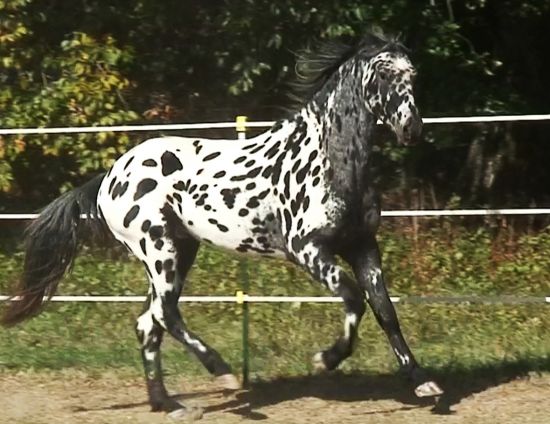



The Akhal-Teke Association of America
The ATAA was established in 1983 by Phil and Margot Case, the first importers of Akhal-Teke horses into the United States. Dedicated to protect, preserve and promote the Akhal-Teke breed and the priceless gene pool it represents.
The Akhal-Teke Association of America was incorporated in 1983 to promote the breed and oversee two registries: The Akhal-Teke Registry of America and the Akhal-Teke Sporthorse Registry of America for crosses of one half or better Akhal-Teke blood. The Sporthorse registry is not for the creation of a new breed, but to record the birth, lineage, and achievements of sporthorses whose breeders have utilized the Akhal-Teke genepool in their creations.
The ATAA was directly responsible for the first-ever visit to the US of Dr. Tatyana Riabova, Registrar of the International Association of Akhal-Teke Horse Breeding in Russia, in 1997, to inspect, register, and grade the American Akhal-Teke population and meet the breeders and owners of these horses. This trip was the culmination of a great deal of correspondence and hard work to acquire governmental permission and visas, and set the stage for the ongoing exchange of information between the International Association and the ATAA. We continue to maintain direct communication with the Mother Stud Book and other countries` breed associations, as we feel the breed is an International treasure, and not limited to any one country.
GOALS OF THE ATAA
1. To increase awareness and recognition of the Akhal-Teke breed in the American horse public.
2. To foster and promote communication and cooperation between owners, breeders, supporters and fanciers of the breed.
3. To educate the sport-horse public to the athletic capabilities of the breed through marketing and competition.
4. To reward the dedication of individuals within the breed who strive to preserve this rare and unique genepool.
5. To work closely with other national and international breed organizations to conserve and protect the breed standards and history.
American History of the Akhal-Teke
The introduction of the Akhal-Teke to America started in September 1978 when Margot and I traveled to Moscow, USSR to attend a Prodintorg Sport Horse Auction. Prodintorg, the government agency which controlled the trade in agricultural products in the USSR, held five hard currency sport horse auctions each year. Akhal-Teke were usually only available at the Spring and Fall auctions. There were no private sales of horses at that time in the USSR. The cold war was in full force, communications consisted of post, telephone and telex; all of which were unreliable, not taking into account the language problem.

At the auction we attended, sixteen Akhal-Teke were presented, ten stallions and six mares. Of the sixteen, ten were sold, seven stallions Senetir in Moscow 1978and three mares. With the assistance of Mr. den Hartog of the Netherlands we purchased three Akhal-Teke; SENETIR a 1975 gold-bay colt, DEDEY a 1975 bay filly, and OLIVA a 1974 bay filly. The horses were transported to Mr. Den Hartog`s farm near Amsterdam while we returned to America carrying blood samples from each horse. The USDA had stopped performing courtesy pretests on blood samples from horses awaiting importation, and the threat of piroplasmosis made it mandatory to know a horse was negative before incurring the cost of flying it to the USA, so we had made arrangements for blood testing before leaving for the auction.
By the time the horses arrived in Amsterdam we had learned they all tested positive for both Babesia Caballi and Babesia Equi. It was depressing news, but it spurred us on in our search for a way to clear them of the antibodies so they could be imported. We hadn`t come this far to just give up. In 1979 the good news was that SENETIR tested negative so that summer he arrived at our farm in Illinois, becoming the first Akhal-Teke in America. The bad news was, DEDEY died in a stable accident in the Netherlands and OLIVA still tested positive. In November 1979, EQUUS magazine published an article, `Stranger in a Strange Land`, about the importation of, SENETIR, the first Akhal-Teke in America. After further treatment OLIVA joined Senetir at our farm in Illinois during the summer of 1980. We were now considerably over our estimated costs, had two Akhal-Teke instead of three, but `The Akhal-Teke Stud` had become a reality and we were on our way to introducing the Akhal-Teke to America.
1981 produced several significant events; we moved `The Akhal-Teke Stud` from Illinois to its present locatioSengar, son of Senetirn at Shenandoah Farm, Staunton, Virginia and SENOVA, out of OLIVA by SENETIR, a goldbay filly was the first Akhal-Teke foaled in America. We also imported two weanling fillies, DUNJA & KARJERA from Dr. W. Peters, Pferdhof Winkum in Germany.
The small Akhal-Teke logo, T within a horseshoe A is designed for use in EQUUS advertisement.
1982 – For a viable breeding operation we needed more Akhal-Teke mares and there were very few mares available, without the internet locating them was a laborious process. Then the connection developed with Mr. Den Hartog produced more results, he sent us photos of 2 mares and a stallion that were for sale. Piro pretests, which had been reinstated by the USDA, showed only one mare tested negative so we imported KUSHKA based on her picture. It is ironic, as we found out several years later, that most of the Akhal-Tekes sold during the 70`s and 80`s were considered saleable because of poor racing records but many were in fact good quality Akhal-Tekes.
Early in the year we were contacted by Hans Sprandel of Minneapolis, MN who in partnership with his brother Eberhard, was planning to import Akhal-Teke from Germany. Many of them had pretested positive for piroplasmosis and they asked if we had any experiences that we would share. In the belief that the importation of additional Akhal-Teke would be helpful in the promotion of the Akhal-Teke in America we provided information on contacts and technology to the Sprandels so they could clear many of their Akhal-Teke of piro antibodies and import them into the USA. Later in the year Hans called again, Eberhard had purchased two mares, MONETA and GALKA, in the USSR to be shipped to the USA. As their farm was not ready Hans asked if we would pick up the mares at the import station and board them until the farm was ready. He also asked if we were interested in buying GALKA, sight unseen we agreed. Unknown to the Sprandel`s or us both mares came with unwanted baggage that we did not discover until years later. Also, both mares were reportedly in foal leaving Russia. Upon arrival at our farm only GALKA was in foal (to Melekush 904).
Kerki, a Senetir daughter1983 – We incorporated The Akhal-Teke Association of America in Virginia as a closely held non-stock corporation. This approach was used because at that time we were the only ones with Akhal-Tekes in America and we wanted to stake a claim for the association name while opening it to the public as a way of gaining recognition for the Akhal-Teke. The long term goals for the association were; `The Preservation, Protection and Promotion of the Akhal-Teke while overseeing The Akhal-Teke Registry and the Akhal-Teke Sporthorse Registry`. The founding directors were Philip Case, Margaret Case and Hans Sprandel. Hans was included as a director because he was in the process of importing a number of Akhal-Teke to America.
Two Akhal-Teke foals are born at `The Akhal-Teke Stud`, Kashman and Melekush USA.
Hans and Eberhard Sprandel import thirty five Akhal-Teke to their farm near Wellington, Colorado and establish the second Akhal-Teke breeding/training center in America.

1984 – January issue of HORSEPLAY, a national magazine, publishes article `The Akhal-Teke Stud: Breeding the Russian Horse in America`.
At Eberhard`s urging the Sprandels embark on forming their own Akhal-Teke association, The World Akhal-Teke Association. With this conflict of interest, Hans Sprandel is removed from The Akhal-Teke Association of America Board of Directors and replaced by Daniel D. Stewart, III of Lexington, KY.
Dr. Willie Peters, Winkum, Germany decides to disband his Akhal-Teke breeding herd because of personal health problems. We are offered the opportunity to purchase the mares DARI & KYS, dams of the weanlings, DUNJA & KARJERA, which we purchased andKerki imported in 1981. Though aged, we decide to take the risk and import both of them. Our broodmare band is growing slowly. Little do we know of what lies ahead.
1985 – In March, Colorado Country Life, publishes article, `The Akhal-Tekke; A regal Russian horse breed finds a new home near Wellington`.
Eberhard Sprandel dies in a farm accident and the Sprandel breeding program in Wellington, CO falls into disarray.
1986 – By the end of this year there were about 70 Akhal-Teke in America, 23 at `The Akhal-Teke Stud` in Virginia and the remainder at the Sprandel ranch, Wellington, CO.
A color brochure, THE AKHAL-TEKE, is designed and 5000 copies are printed to help satisfy requests for information about the Akhal-Teke. Information packets including brochures and articles are developed for mailing.
1988 – Started exploring the possibility of having all Akhal-Teke blood typed as a requirement for registration. The first contact was with the Serology Lab, School of Veterinary Medicine, Univ. of California, Davis, CA. They were quite formal in their dealings and we were such a small association it was not a comfortable arrangement.
October, The Horse Digest publishes, `Akhal Tekkiners, Horses From Russia`.
1989 – October, Dressage & CT magazine publishes, `The Akhal-Teke; Antiquity Stock for an American Sport Horse`.
1990 – Established contact with Gus Cothran, Ph.D., Director, Equine Blood Typing Research Lab, College of Agriculture, University of Kentucky, Lexington, KY. He was conducting a research project examining genetic relationships among horse breeds and said blood typing the Akhal-Teke would be an extremely valuable contribution to the study. He had not expected to be able to include the Akhal-Teke in the Sengarstudy so soon. We developed a good working relationship with Dr. Cothran, and later, introduced him to Louis Firouz in Iran so he was able to include Iranian Akhal-Teke as well as the Caspian Horse in his study.
When Hans Sprandel decided to disperse his Akhal-Teke herd at auction, arrangements were made with Gus Cothran at The Univ. of KY to have all the Akhal-Teke blood typed prior to the auction so they could be registered in The Akhal-Teke Association of America, Akhal-Teke Registry.
In August, The Sprandel Golden Collection Sale was held in Fort Collins, Colorado, hosted by Hans Sprandel. Forty two horses were auctioned, consisting of 39 Akhal-Teke (22 mares/fillies, 13 stallions/colts, 4 geldings) plus a Budyonny gelding, a Don mare and an A-T x Don mare. This auction increased the number of Akhal-Teke owners in America by a significant amount in one night.
1991 – A Memorandum of Agreement between The Akhal-Teke Association of America and The Equine Blood Typing Lab at The Univ. of Kentucky was signed, agreeing that all blood typing required by the ATAA would be done at the U of KY.
During this time period, changes were taking place in the international political arena and in international communications that would have a major impact on the Akhal-Teke in America. The USSR was undergoing dramatic changes resulting in its breakup into individual independent states at the end 1991. The collapse of the centralized government resulted in a loss of direction and funding for the Akhal-Teke Breeding Farms and the Central Institute of Horse Breeding that controlled the Studbook and Registry. The lack of law and order saw many Akhal-Teke transferred from government ownership to private owners with less than proper documentation. Suddenly, quite a few Akhal-Teke could be purchased for hard currency from many sources. As all of this was taking place the Internet and World Wide Web were becoming increasingly available to the public allowing affordable, instantaneous, world wide sharing of information. It would take the Akhal-Teke community some time to adjust to the new world order.
1992 – Even from the chaos there were encouraging signs from The Institute of Horse Breeding, of a desire for contacts with Akhal-Teke breeders in America and a freer flow of information. Communications were still sporadic, language was a problem, but it was a start. This new freedom in Russia also uncovered problems that had existed under the old system. It was at this time that questions were being raised concerning the pedigrees of some of the Akhal-Teke mares that had been sold by Prodintorg during the 1970`s and 1980`s and were imported into the United States. Contact with The Russian Institute of Horse Breeding almost impossible.
Color brochure `The Akhal-Teke` is revised and another 5000 are printed as the original 5000 have been used up.Sengar
1993/1994 – Contact was established with Tatiana Riabova at the Institute of Horse Breeding with the assistance of Dimitri Urnov. In response to our questions Tatiana confirmed that the Russian authorities had declared that GALKA, MONETA, and KYS had been sold and exported with falsified pedigrees, therefore, they or none of their progeny were considered pureblooded Akhal-Teke. Of the 47 Akhal-Teke `The Akhal-Teke Stud` had imported, purchased or bred, 23 were considered non-purebred. Of the 39 Akhal-Teke sold at `The Sprandel Golden Collection Sale` four were considered non-purebred. Suddenly 30% of the Akhal-Teke in America were considered non-purebred. The revelation of falsified pedigrees caused a loss of time, money and credibility for American breeders that is difficult to measure and left a residue of suspicion that will take some time to overcome.
The situation was depressing but it was time to make the best of a lousy situation. The non-purebreds were sold at reduced prices with the pedigree situation explained to each purchaser. Many people are now aware of and dedicated to the Akhal-Teke breed because of their purchase of one of these almost pure non-purebreds.
There was a bright spot during the year, in July, HORSE ILLUSTRATED featured the Akhal-Teke as `Breed of the Month` which included a centerfold picture and SENETIR`s picture on the cover..
1995 – Cathy Leddy volunteered to help with the association, a newsletter was discussed, she started publication and `The Akhal-Teke Quarterly` was foaled.
1996 – In its Jan/Feb issue, SPUR magazine, publishes a comprehensive article about the Akhal-Teke; `Denizens of the Desert`.
First North American Akhal-Teke Conference, organized by Cathy Leddy in Snohomish, WA. Thirty people attended and took part in discussions on bloodlines, breeding and genetics.
1997 – Second North American Akhal-Teke Conference organized by Phil & Margot Case in Staunton, VA.
Tatiana Riabova, Ph.D., Akhal-Teke Registrar, Russian Institute of Horse Breeding is an honored guest and speaker during her first visit to America. During her visit she performed the first grading of Akhal-Teke in America and was very pleased with the high quality she saw. Unfortunately, she also brought some bad news. In addition to GALKA, MONETA and KYS she informed us that JUL had been reclassified as non-purebred, so she and her progeny were not eligible for registration in The Master Stud Book. This meant a further five Akhal-Teke from The Sprandel Golden Collection Sale had falsified Russian pedigrees and two more breeding programs in America were heavily impacted. At the end of the Conference, summarizing the damage caused by falsified Russian pedigrees showed that of the 116 Akhal-Teke in The Akhal-Teke Association of America, Akhal-Teke Registry, 40 had been reclassified as non-purebred. Note: This does not infer that America was the only victim of falsified pedigrees. Other countries suffered also, however to my knowledge the full extent of the problem has never been documented. For obvious reasons The International Organization is not highly motivated to study the problem.
Dr.Tito Pontecorvo, owner of The Stud Farm Akhaltekinets, Dubna, Russia also attended the conference. Tito is an experienced Akhal-Teke breeder and owns the largest privately owned Akhal-Teke herd in Russia, probably the world, numbering almost 200 horses. He announced during the conference that he planned on importing quite a few of his Akhal-Teke to America and to establish a breeding/training center.
For fourteen years Margot and I had operated and funded The Akhal-Teke Association of America. The Association had been operating with no formal membership, but listed a growing number of Akhal-Teke owners and Akhal-Teke admirers, which we hoped would one day be owners. To relieve some of our workload a Governing/Steering Committee was appointed to operate The Akhal-Teke Association of America for two years while effecting a smooth transition from a tightly held corporation to an association governed and operated by and for its members.
The Akhal-Teke Stud exports the colt SVENGALI, out of OLIVA by SENETIR, to Australia where he emulates his sire and is the first Akhal-Teke imported into Australia.
In September Tito Pontecorvo imports 30 plus Akhal-Teke to America and establishes an Akhal-Teke breeding/training center in Dixon, Texas.
1998 – The March issue of HORSE ILLUSTRATED carries an article; `The Akhal-Teke; A True Russian Treasure`. ContentAdvert Appaloosa Horses


